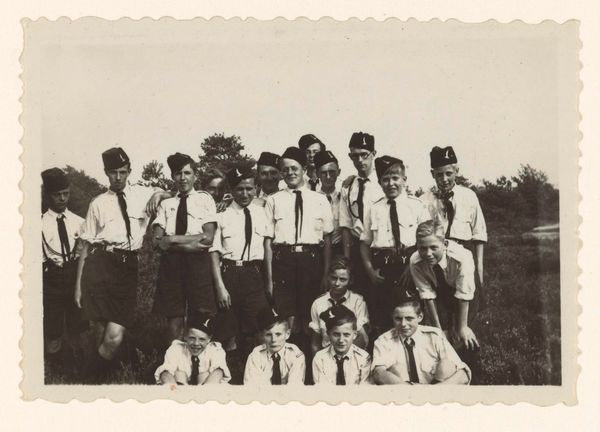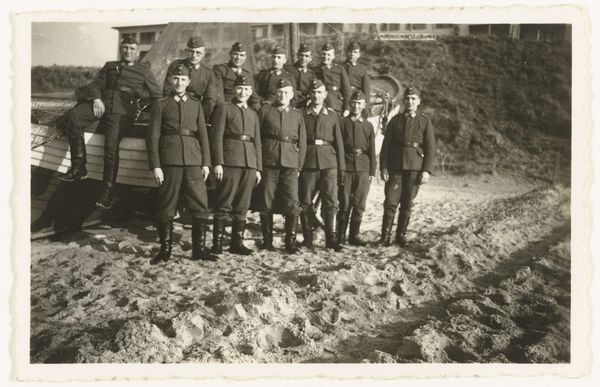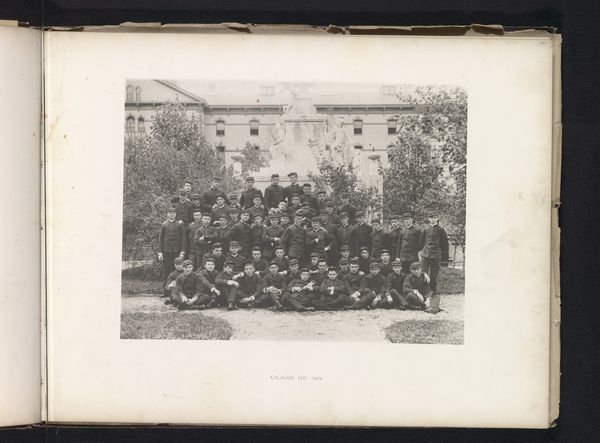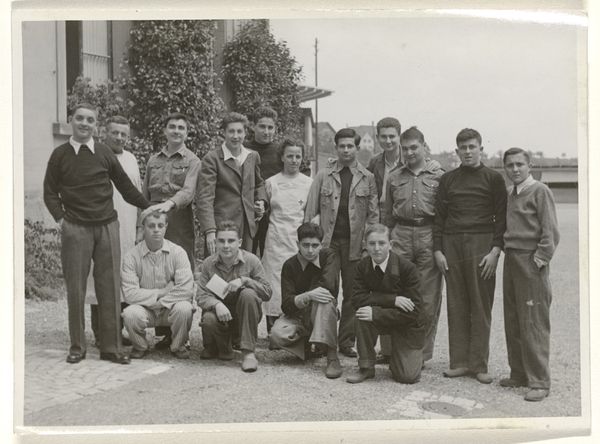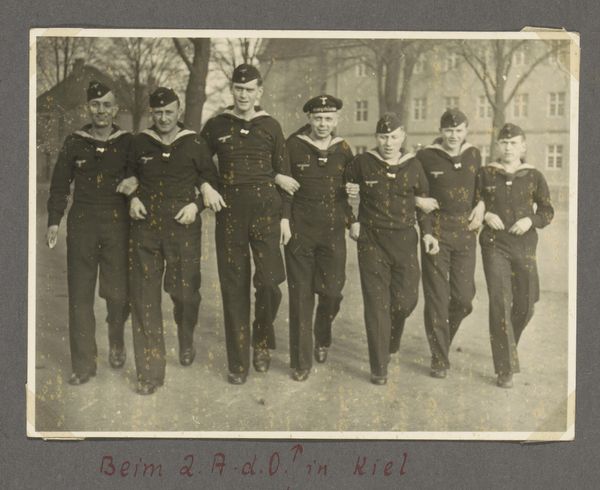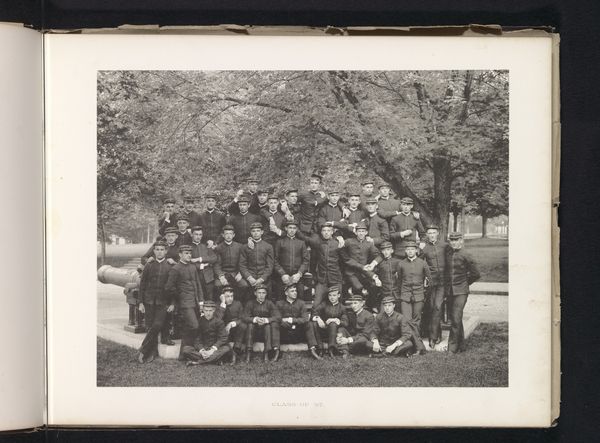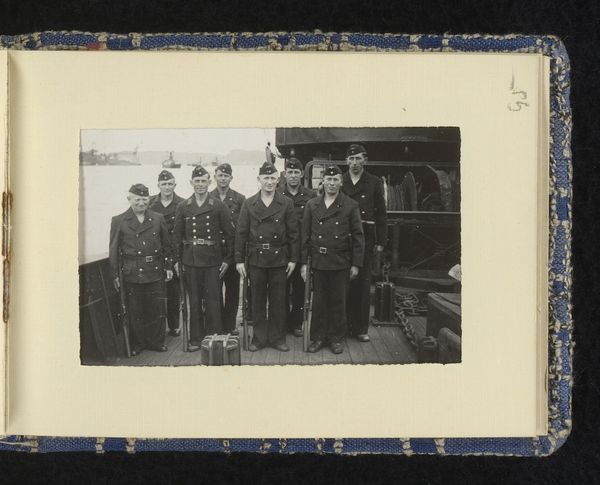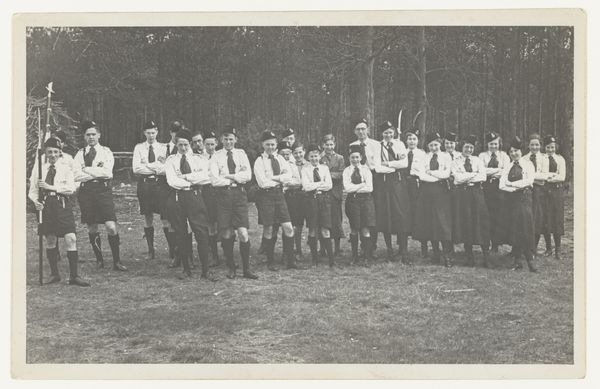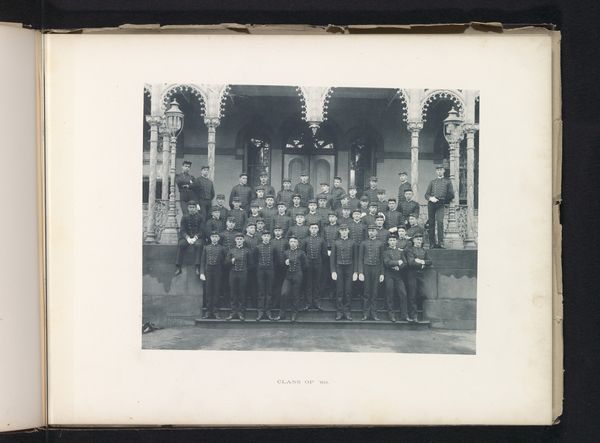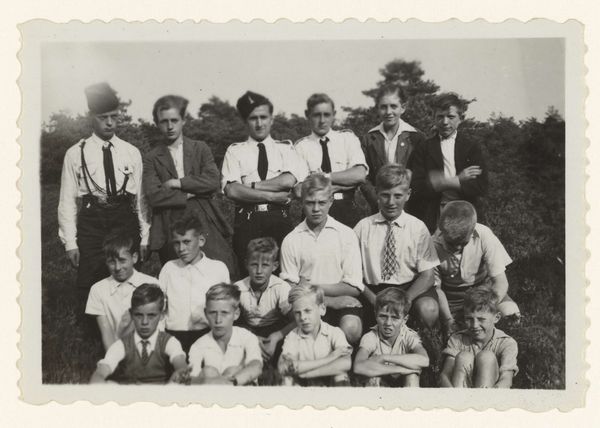
Dimensions: height 5.5 cm, width 8 cm
Copyright: Rijks Museum: Open Domain
Curator: So, here we have an unsettling gelatin-silver print titled "Duitse Luftwaffe militairen aan de kust"—"German Luftwaffe soldiers on the coast"—dated sometime between 1940 and 1945. It resides here at the Rijksmuseum. Editor: Immediately, there's something about the grey tonality that washes over me… like a persistent, muted fog. It sets a strange atmosphere. I can almost smell the dampness and feel the gritty sand. Curator: The grain in the gelatin-silver is definitely a texture, isn't it? Looking closer, you start to see it's a pretty standard group portrait of German airmen posed on a beach. Given the probable time, though, it transcends being merely a photograph, no? Think about the labor involved. Every print of this type necessitated manual development, chemicals, paper. This isn’t a candid shot from a phone. Editor: True, and their uniforms speak of industry and control. Each stitch, button, precisely placed... but despite the posed formality, you almost catch a fleeting hint of individual apprehension in their eyes, especially the younger ones. Does it capture a sense of looming defeat, perhaps? A collective weariness despite the facade of military precision? Curator: It's hard to tell intentions from a face in a picture, of course. What resonates more for me is this sense of performance of power. The backdrop isn't some staged studio; it's the Dutch coast, claimed—temporarily—as a spoil of war. The very sand beneath them is a stage upon which their authority plays out, enabled and amplified through material processes of war and photographic record. It makes me think about the function and nature of wartime propaganda, especially image distribution at the time. Editor: But the tide eventually comes in, right? The ephemerality of the setting contrasted with the photograph's attempt at permanence becomes poignant. I imagine their carefully constructed image slowly eroded by the persistent power of nature—the eternal rhythm of tides indifferent to their brief occupation. Curator: The materiality is so striking. Even a photographic print has a tangible lifespan—a limited exposure to light, chemical reactions at play. I see this photo existing now as a relic, evidence, and a question of what and how it communicates beyond any intention. Editor: It does feel imbued with layers. As a simple snapshot it holds power, and those textures become emotional. It speaks of human imposition and a battle against time itself. Food for thought indeed.
Comments
No comments
Be the first to comment and join the conversation on the ultimate creative platform.
